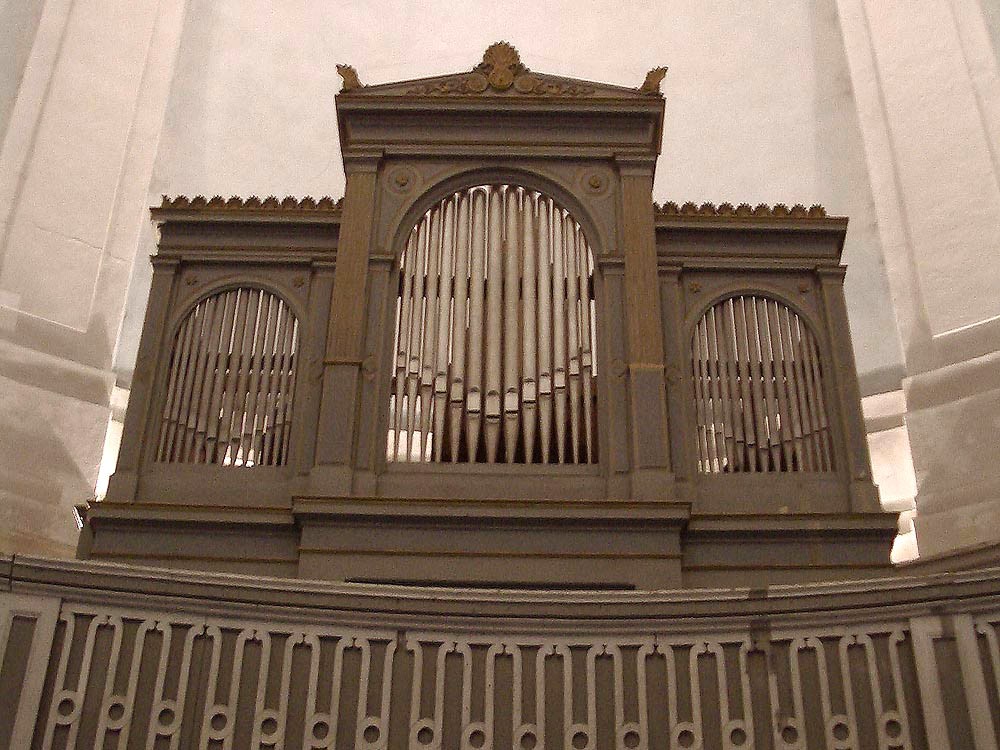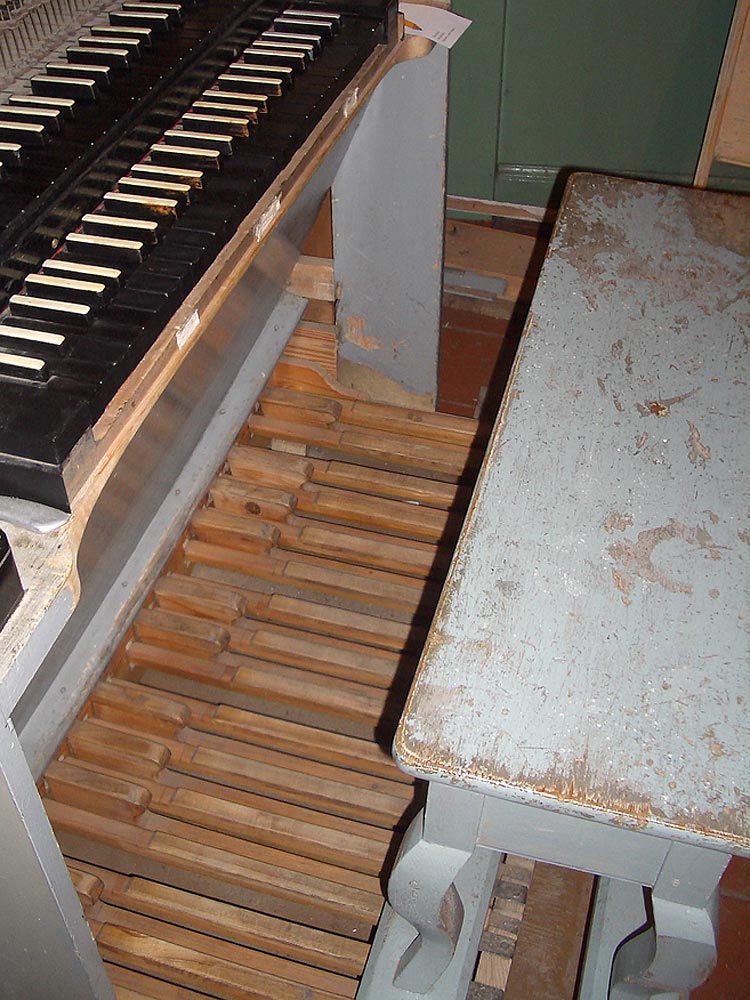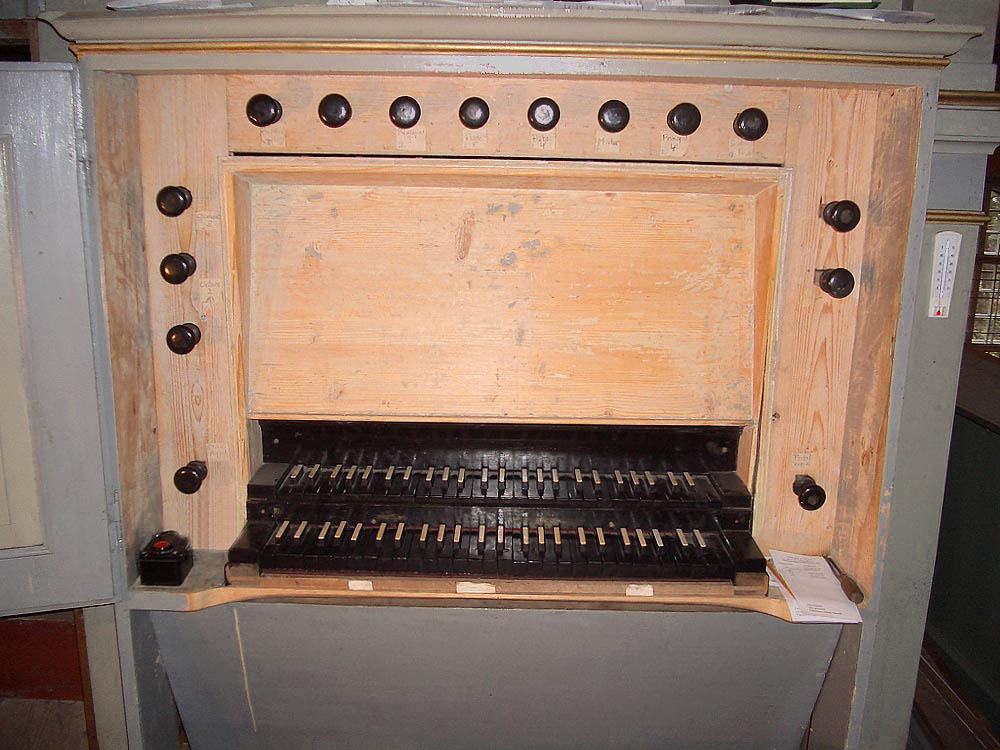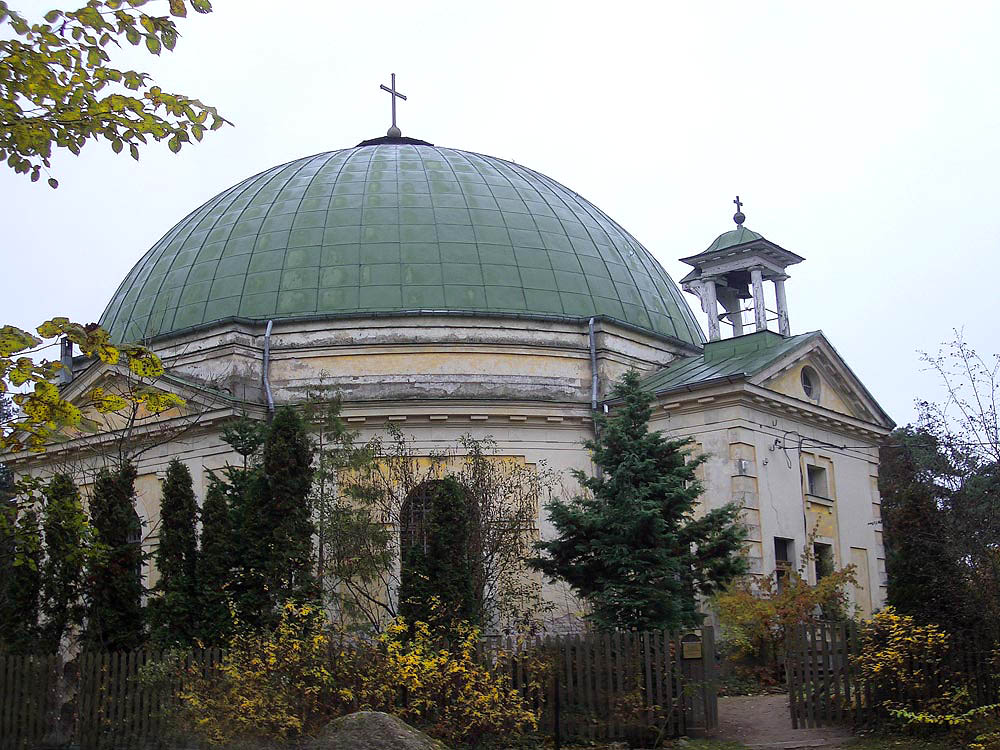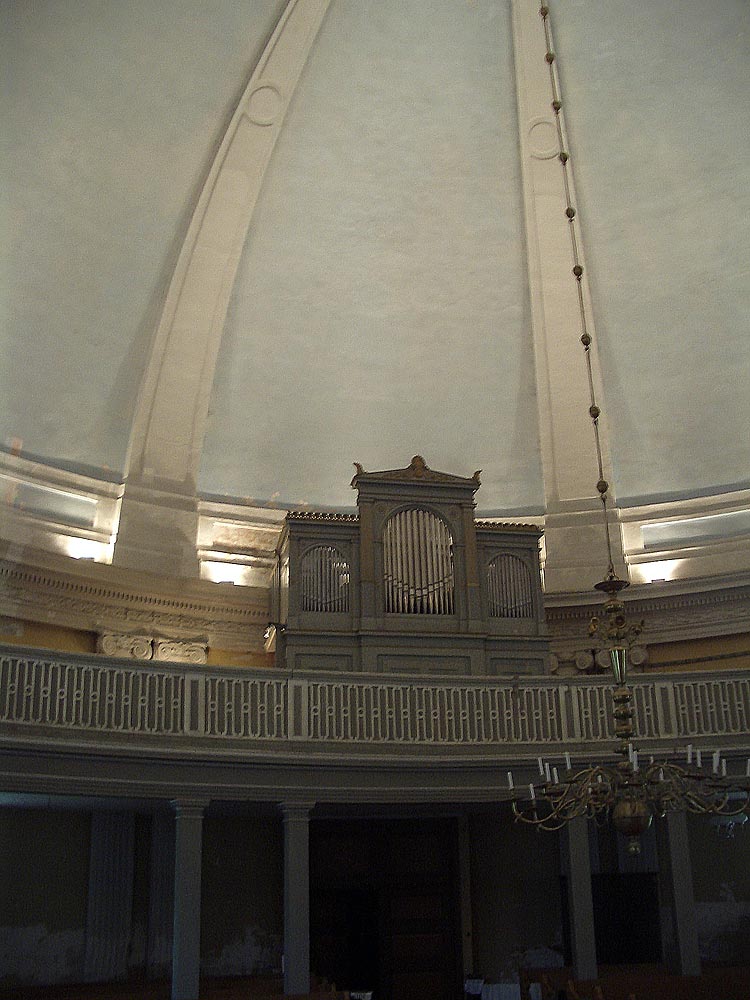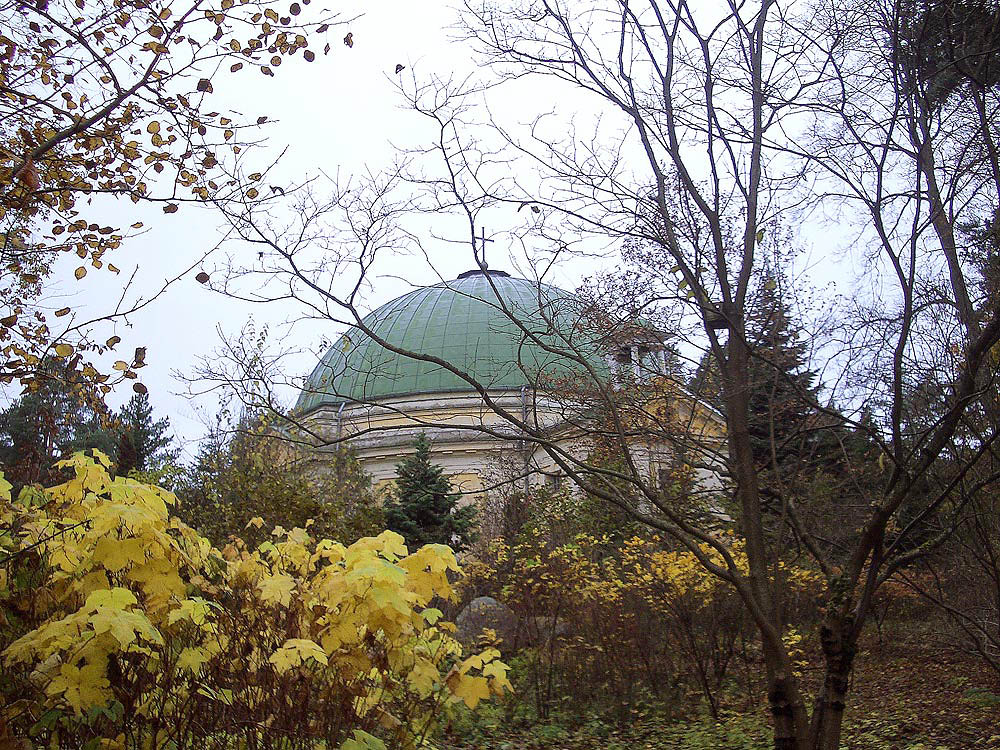Ziedonis, Katlakalna evaņģēliski luteriskā baznīca
| Builder | A. Martin |
|---|---|
| Year | 1870 |
| Period/Style | Romantic |
| Stops | 11 |
| Keyboards | 2+P |
| Keyaction | tracker/mechanical |
| Tuning | Equal at 435 Hz |
Katlakalna Church, built in 1794 according to a design by Kr. Haberland, is historically connected to the organ builder and teacher Johann Christoph Christien. In 1813, Christien succeeded his deceased father, David Christien, as the teacher and organist. The earliest records of the church's organs date back to 1818, noting that on December 26, the repaired organs, overseen by Christien, were played by a young man named Niclas, trained by Christien himself.
The current organ was consecrated on July 19, 1870, and is the 62nd instrument built by organ builder August Martin. The organ prospect was painted in 1889, and a note on the back of the organ indicates a repair by Pēteris Maļinovskis from May to September 1957, though details of the repairs are unknown. In the 1990s, Tālivaldis Deksnis repaired the organ, replacing many of the missing metal pipes with those from A. Laukhuff, W. Sauer, and Walcker, and with new pipes made in Lithuania. Some of the original A. Martin pipes, now severely damaged, are stored in a cupboard on the balcony, alongside older wooden pipes.
The church’s domed ceiling creates a unique and beautiful acoustic environment. The original disposition of the instrument has been altered, with only the wooden registers Floete 8', Bourdon 16', and Subbass 16' authentically preserved. Parts of the wooden pipes in the Gedackt 8' and Gamba 8' registers also remain. Deformed remnants suggest the presence of a Salicional 8' register and a wooden Traversflöte 8', typical of A. Martin's work. A reconstruction of the instrument could be possible if the original disposition is determined.
The current organ was consecrated on July 19, 1870, and is the 62nd instrument built by organ builder August Martin. The organ prospect was painted in 1889, and a note on the back of the organ indicates a repair by Pēteris Maļinovskis from May to September 1957, though details of the repairs are unknown. In the 1990s, Tālivaldis Deksnis repaired the organ, replacing many of the missing metal pipes with those from A. Laukhuff, W. Sauer, and Walcker, and with new pipes made in Lithuania. Some of the original A. Martin pipes, now severely damaged, are stored in a cupboard on the balcony, alongside older wooden pipes.
The church’s domed ceiling creates a unique and beautiful acoustic environment. The original disposition of the instrument has been altered, with only the wooden registers Floete 8', Bourdon 16', and Subbass 16' authentically preserved. Parts of the wooden pipes in the Gedackt 8' and Gamba 8' registers also remain. Deformed remnants suggest the presence of a Salicional 8' register and a wooden Traversflöte 8', typical of A. Martin's work. A reconstruction of the instrument could be possible if the original disposition is determined.
| I. Manual | II. Manual | Pedal |
|---|---|---|
| Bordun 16' | Gedackt 8' | Subbass 16' |
| Principal 8' | Flöte 4' | |
| Gamba 8' | Octave 2' | |
| Flöte 8' | ||
| Principal 4' | ||
| Flöte 4' | ||
| Mixtur |
E rk 008
0:00
0:00
E rk 007
0:00
0:00
E rk 006
0:00
0:00
E rk 005
0:00
0:00
E rk 004
0:00
0:00
E rk 003
0:00
0:00
E rk 002
0:00
0:00
E rk 001
0:00
0:00
https://orgcat.lv/katlakalns_manual.htm
 Pipe Organ Map
Pipe Organ Map